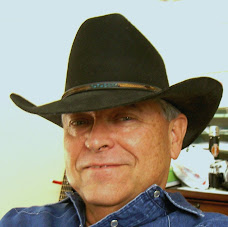 You might tell yourself after reading the following poem, "I've never heard or read that before, how can it be famous?" Well it depends on who you are and where you're from. While I was in Arkansas several years ago, I entered a State contest that required writing a narrative poem about the role of Arkansas in the Louisiana purchase. It required historical research, and an attached bibliography. I entered and won. The prize was one thousand dollars. So, not too many poets have won a thousand dollars for a single poem, and I guess by some measure and in some circles this poem is famous. I hope you enjoy reading it and I also hope you gain some knowledge of Arkansas history. It is my most famous poem.
You might tell yourself after reading the following poem, "I've never heard or read that before, how can it be famous?" Well it depends on who you are and where you're from. While I was in Arkansas several years ago, I entered a State contest that required writing a narrative poem about the role of Arkansas in the Louisiana purchase. It required historical research, and an attached bibliography. I entered and won. The prize was one thousand dollars. So, not too many poets have won a thousand dollars for a single poem, and I guess by some measure and in some circles this poem is famous. I hope you enjoy reading it and I also hope you gain some knowledge of Arkansas history. It is my most famous poem.ARKANSAS SWAMP MARKER
West of the colonies,
wild and untamed,
lay a vast stretch of wilderness
owned by the French.
To the south, gulf breezes
cooled old New Orleans.
To the north was Canada’s
vast timbered realm.
In between there was Arkansas,
harsh and unyielding.
Caddo and Quapaw
had managed to stay.
In 1803 the French
had to sell it.
The young U.S. bought it
and moved on its claim.
They needed a marker
to anchor their survey.
A marker, in Arkansas’s
dark river swamps.
North from the mouth
of the Arkansas river.
West from the mouth
of the St Francis too.
Robbins met Brown on
the 10th of November,
in a swamp full of
Cypress and Tupelo gum.
In 1815, they marked
two gum trees.
Base line and meridian
for westward expansion.
In six square mile townships
the new frontier grew.
All measured their boundaries
from an Arkansas swamp.
The settlers came,
moved partly by greed.
The Indians left,
without charity.
Modern surveys confirm it.
The point was the right one.
Those two stately gums
in an Arkansas swamp.
So the West was established,
and new States were added,
by shooting a line to
where Robbins met Brown
at the Tupelo gums
in an Arkansas swamp,
where few folks had been,
and few want to go.
The Louisiana Purchase
of President Jefferson.
Explored by the duo of
Lewis and Clark.
Was mapped and divided
by using two gum trees.
Deep in the heart
of an Arkansas Swamp.



